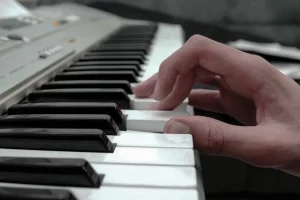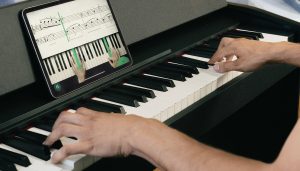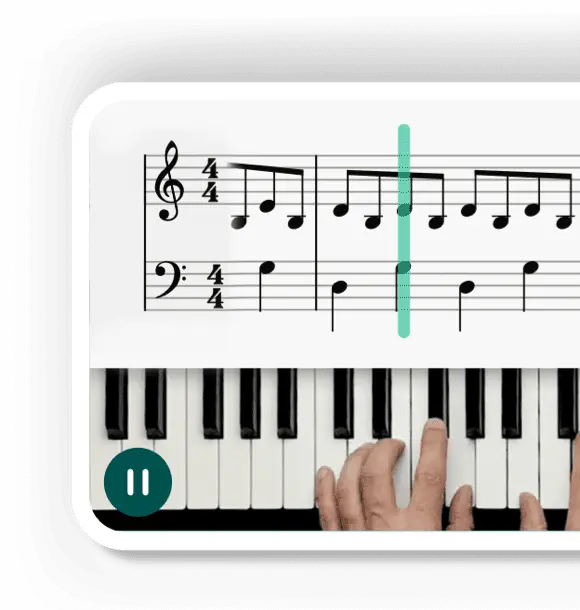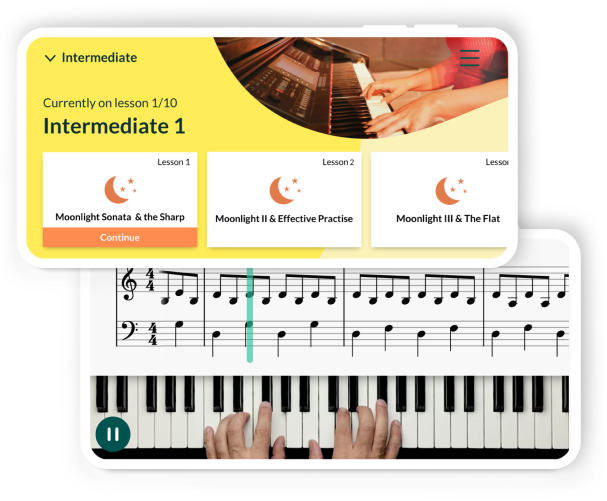This guide will delve into various reharmonization techniques. Whether you’re a beginner or have some experience, this guide aims to enhance your understanding and application of reharmonization in music.
By the end of this guide, you’ll have a solid foundation in reharmonization techniques, empowering you to explore and innovate in your musical journey.
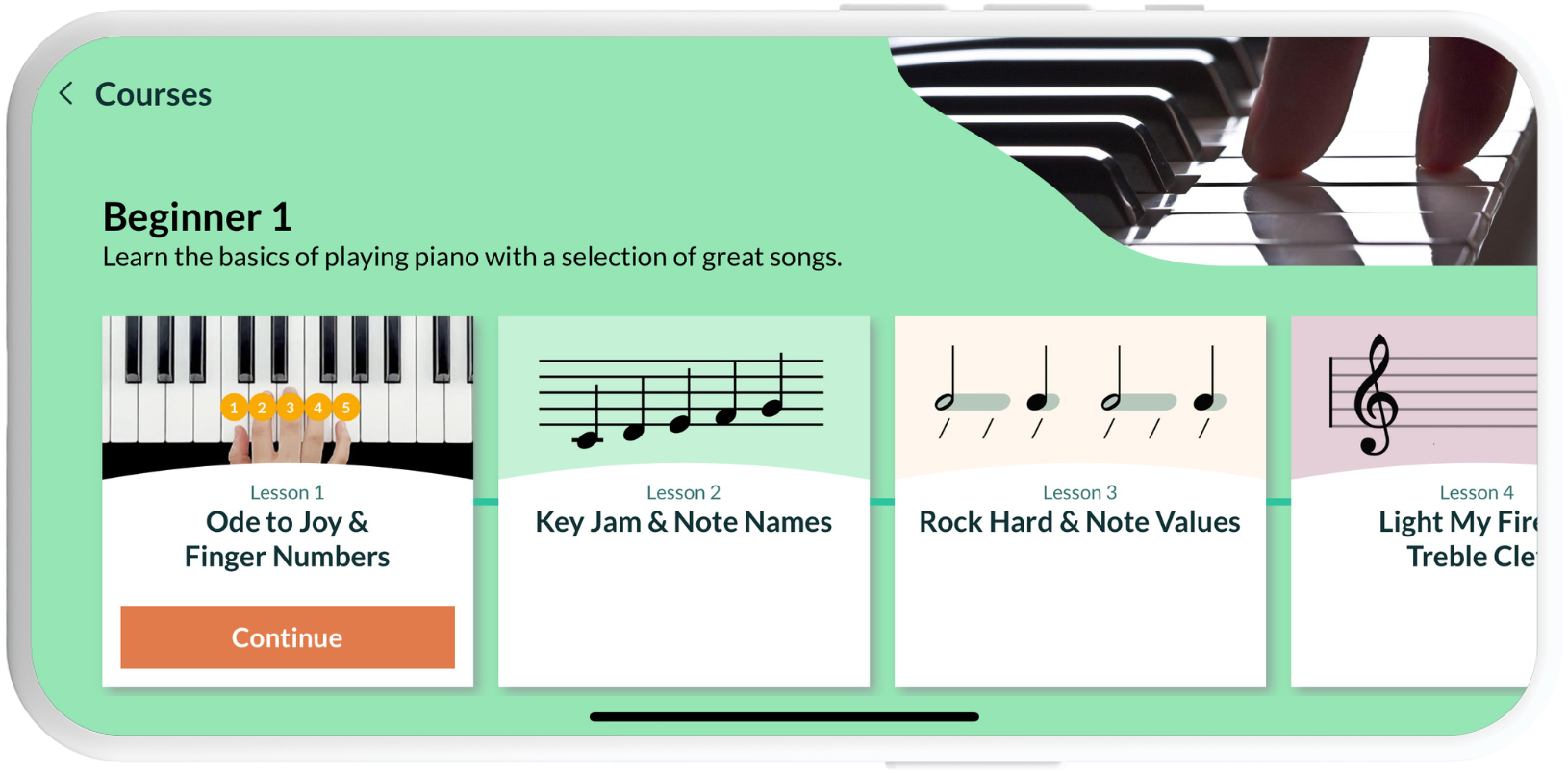
No credit card details required
What is reharmonization?
Reharmonization is the practice of altering the harmonic structure of a song while keeping the melody intact. This technique allows musicians to inject new life into familiar compositions, offering a fresh perspective on well-known melodies.
Why is reharmonization important?
If you’re new to the world of piano or music theory, you might wonder why reharmonization matters. Here are some compelling reasons:
- Individual expression: Reharmonization enables you to personalize a piece of music, making it uniquely yours.
- Enhanced creativity: This technique opens up a myriad of creative avenues, allowing you to explore different musical landscapes.
- Musical understanding: Mastering reharmonization can deepen your grasp of music theory, enriching your overall musical experience.
Why reharmonize a song?
Reharmonization isn’t just a flashy technique to show off your musical prowess; it’s a transformative tool that can elevate a song from good to unforgettable. Here’s how reharmonizing can improve a song:
Adds emotional complexity
One of the most compelling reasons to reharmonize a song is to add emotional depth. By changing the chords under a melody, you can shift the emotional tone of the entire piece. For example, a simple change from a major to a minor chord can turn a cheerful song into a poignant one. This added complexity can make the song more resonant and memorable for listeners.
Enhances musical interest
Let’s face it, even the most beloved songs can become stale over time. Reharmonization breathes new life into familiar tunes. By introducing unexpected chords or chord progressions, you can pique the listener’s interest and keep them engaged from start to finish.
Showcases artistic skill
Reharmonization is an excellent way to demonstrate your musical skills and creativity. It allows you to put your own stamp on a piece, showcasing your understanding of music theory and your artistic sensibilities. This can be particularly impactful in live performances, where the element of surprise can captivate your audience.
Creates a unique experience
When you reharmonize a well-known song, you offer listeners a unique musical experience. It’s like seeing a favorite painting but with new colors and textures. This fresh take can make your rendition stand out, making it more likely that your performance will be remembered and talked about.
Improves versatility
Reharmonizing can also make a song more versatile, allowing it to fit different moods or settings. For instance, a reharmonized version of a classic pop song could be more suitable for a romantic dinner setting, while the original might be better suited for a lively party.
The essentials of reharmonization
Before diving into the nitty-gritty of reharmonization techniques, it’s crucial to understand some foundational elements. These are the building blocks that will enable you to reharmonize a song effectively.
- Key melody note: The key melody note is the anchor around which you’ll build your new harmonic structure. It’s the note that stands out in a melody and often carries the emotional weight of the song. When reharmonizing, your choice of chords should complement this key melody note, either enhancing its emotional impact or adding a new layer of complexity.
- Harmony: Harmony refers to the chords that accompany the melody. In reharmonization, you’ll be altering these chords to create a new harmonic context. The trick is to choose chords that not only fit with the key melody note but also add something new to the song. When it comes to reharmonizing, not all harmonies are created equal.
Here are some chord types that are commonly used in reharmonization techniques:
- Major chords: Major chords are often used to convey happiness or resolution. They can be a safe choice when you’re new to reharmonization, but they also offer plenty of room for creative exploration.
- Minor chords: Minor chords typically evoke feelings of sadness or tension. Using them in reharmonization can add emotional depth to a song, making it more poignant or introspective.
- Diminished chords: Diminished chords are less common but can be highly effective for adding tension or drama. They work well in transitional sections of a song, leading the listener to anticipate what comes next.
- Augmented chords: Augmented chords add a sense of instability or dissonance. They can be used sparingly to create moments of surprise or tension within the song.
- Minor 9 chords: Minor 9 chords are rich and complex, often used in jazz and R&B genres. Incorporating them into your reharmonization can add a sophisticated touch to the song.
Reharmonization techniques
Now that we’ve covered the basics, let’s dive into some specific reharmonization techniques that can elevate your music to the next level. Each technique offers a unique way to reharmonize a song, adding complexity, emotion, or a fresh twist.
Increment of notes to the chords
Adding extra piano notes to existing chords is one of the simplest yet most effective reharmonization techniques. For example, turning a basic C major chord into a Cmaj7 can add a layer of richness and complexity. This technique is particularly useful in jazz and R&B genres, where extended chords are common.
Replacement of chords with the same harmonic function
In this technique, you replace a piano chord with another that serves the same harmonic function. For instance, you could replace a V chord with a vii° chord. Both chords create tension that wants to resolve to the tonic, but they offer different flavors of tension.
For example, in the key of C major, this would mean replacing a G major chord, the V chord, with a B diminished chord, vii°. Here is how this works. G major is spelled G – B – D. If we turn G major into G7 to add extra tension, we get G – B – D – F.
Next, B diminished is spelled B – D – F. Notice how the G major and B diminished chords overlap in the G7 chord? This is why we can substitute B diminished for G major. Try it out and see how you like it!
Replacement of the musical mode used
Switching the musical mode is a more advanced technique that can dramatically change the mood of a song. For example, if the original song is in a major key, try reharmonizing it using chords from its relative minor. This can turn a happy, upbeat song into something more somber or introspective.
For example, if you have a song in G major, try to reharmonize the song in E minor, the relative minor of G major.
Use of progressions and cadences
Progressions and cadences offer structured ways to reharmonize a song. For example, instead of resolving a V chord to a I chord, you could use a ii-V-I progression, adding more movement and complexity to the resolution. Jazz musicians have invented many ways to add and layer chords in this manner.
Modulations
Modulation involves changing the piano key of a song, either temporarily or permanently. This can add a sense of journey or evolution, making the song more dynamic and engaging. It’s a technique often used in classical music but can be equally effective in contemporary genres.
Borrowed chords
Borrowed chords are taken from a key or mode different from the song’s original key. For example, you could borrow a chord from the parallel minor key to add a moment of unexpected darkness to a major-key song.
Essential rules and tips
There are some guidelines and tips that can help you navigate the intricate world of reharmonization. Let’s get into it.
Know the theory
Before you start reharmonizing, make sure you have a solid grasp of music theory.
Understanding piano scales, chords, and harmonic functions is essential for effective reharmonization. It’s like knowing the rules of grammar before you start writing poetry.
Start simple
If you’re new to reharmonization, start with simpler techniques like adding notes to existing chords or replacing chords with the same harmonic function. As you get more comfortable, you can venture into more complex methods like modulations and borrowed chords.
Listen and analyze
One of the best ways to learn how to reharmonize is by listening to songs that have been successfully reharmonized. Analyze what the artist did and try to understand the emotional or musical impact of their choices.
Balanced experiment
While reharmonization encourages creativity, going overboard can make your song sound disjointed or confusing. The key is to find a balance between the original song’s essence and your creative additions.
Test the waters
Before finalizing your reharmonized version, play it for a few trusted ears. Feedback can offer valuable insights into what’s working and what needs tweaking.
The art of reharmonization
Reharmonization is more than just a musical technique; it’s an art form that allows you to breathe new life into existing songs.
Whether you’re a beginner looking to add some flair to your piano playing or a seasoned musician aiming for more complexity, reharmonization offers endless possibilities. It’s a tool that can make your music more emotionally resonant, complex, and downright interesting.
If you’re keen to dive deeper, remember that Skoove is here to help. With a range of self-learning online piano lessons, you can master the art of reharmonization at your own pace.
Author of this blog post:

Eddie Bond is a multi-instrumentalist performer, composer, and music instructor currently based in Seattle, Washington USA. He has performed extensively in the US, Canada, Argentina, and China, released over 40 albums, and has over a decade experience working with music students of all ages and ability levels.








